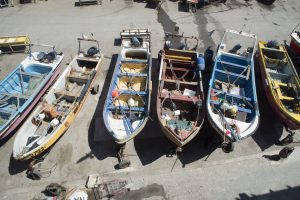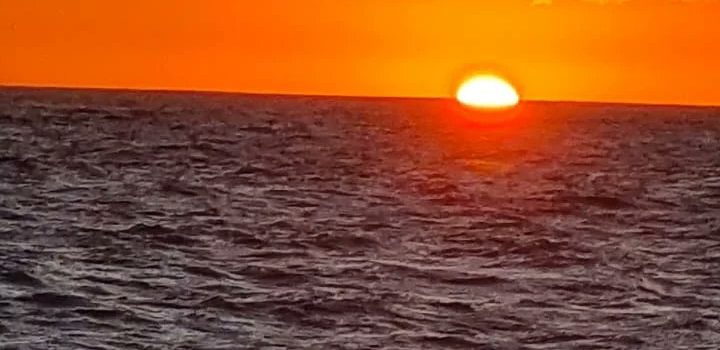IFOP Delegation exhibits at Eastern Rim Upwelling Systems International Conference (EBUS):
October 16th, 2022 In Lima, Peru, between September 19th and 23rd Eastern Rim Upwelling Systems (EBUS): Past, Present and Future and Second International Humboldt Current System Conference will be held. https://www.ebus-lima2022.com/es
In Lima, Peru, between September 19th and 23rd Eastern Rim Upwelling Systems (EBUS): Past, Present and Future and Second International Humboldt Current System Conference will be held. https://www.ebus-lima2022.com/es
From IFOP Fisheries Development Institute, a delegation made up of 8 researchers is attending. They will show their Humboldt Current related work .
The contribution provided by the Binational Chile-Peru project “Catalysing Implementation of a Strategic Action Program for the Sustainable Management of Shared Living Marine Resources in the Humboldt Current System (HCS)” is appreciated.
About the presentations
Title: Geographical distribution of the Humboldt squid Dosidicus gigas .Present and future
Authors: Karen Belmar-Salinas, Felipe Torres, María Cecilia Pardo-Gandarillas and Christian Ibáñez
This work’s objective was to evaluate cuttlefish geographical range under different temperature scenarios according to the Representative Concentration Route (RCP) criteria . For this, a maximum entropy analysis was carried out to evaluate and project its future distribution, 1,500 occurrence data throughout the Pacific Ocean, as well as environmental variables related to sea surface temperature, current speed and salinity. Our results indicate that the geographic distribution of D. gigas would evolve towards colder latitudes due to changes in sea surface temperature, the variable that best explains this trend.
Title “ Main environmental attributes influence on anchoveta fishery (Engraulis ringens) in northern Chile”
Author Graciela Perez
To determinate how prevailing environmental variables between 2003 – 2020 influence anchoveta fishery distribution in northern zone of Chile (18.3°S – 26°S), considering Humboldt current predominance, which favors a permanent coastal upwelling system that generates high seasonality in the region.
Title: Maturity of anchoveta Engraulis ringens from northern Chile: estimates for 2007-2020 period.
Author: Eduardo Diaz
From pelagic fishery derived data in northern zone, during the last decade anchoveta population shows changes in its sizes composition. Antecedents indicate sustained decrease of average sizes in catches, with little presence of sizes from 14 cm and practically null incidence on 16 cm of total length, being the fishery sustained by small sizes specimens. In this context, the implication of demographic structure on reproductive behavior changes is analyzed, emphasizing on determining temporal variations in sexual maturity. For this purpose, the period 2007-2020 is analyzed.
Title: “Deep learning and production models with autoregressive and multivariate approach for jack mackerel fishery simulation associated with environmental conditions”
Authors: Francisco Plaza, Eleuterio Yáñez, Pierre Fréon Héctor Araya & Antonio Aranis.
Modeling of jack mackerel (Trachurus murphy) fishery in Southern Eastern Pacific is carried out, integrating effort, catches and averages of the sea surface temperature in the area between 32º-42ºS-71º-80ºW under two approaches: the first through of production models, implemented in Climprod software, which consider annual data; The second approach considers deep learning models such as Convolutional Neural Networks (CNN) and Recurrent Long and Short Memory Networks (Long Short Term Memory Networks, LSTM), under a long memory autoregressive monthly perspective. . The results provide simulations of resource’s catches under different environmental scenarios that can be useful to establish short and long term predictions.
Title: “Vertical distribution of barnacle larvae diurnal variability through seasonal thermocline in Cartagena Bay, Chile”
Author: Jessica Bonicelli Proaño
This work evaluates and compares barnacle larvae vertical distribution between an exposed and a wind-protected location within Cartagena Bay, central Chile. The results show that vertical distribution is not uniform across different taxa or barnacle larval stages within the bay and varies in response to environmental conditions.
Title: Benthic management plans in Chile Case studies
Authors: Carlos Techeira & Carlos Cortes.
Benthic Management Plans operation in Chile has required evaluation methodologies implementation for these resources, historically unrelated to these processes development. Two case studies are presented, bivalves and macroalgae, which satisfy required advice with direct and indirect evaluation alternatives, for different states of information knowledge and availability
Presentación poster:
Title: Growth parameters variability in a benthic population with a wide spatial and environmental distribution: life cycle characterization effect
Authors: Carlos Techeira, Mauricio Ibarra & Carlos Cortes.
Growth parameters determination for locust resource is presented, based on size studies for 100 Management Areas between Iquique and Valparaíso regions. A latitudinal gradient for maximum sizes, high local growth variability rates and clusters association with oceanographic environmental variables, collected with simultaneous occurrence of growth information for a period of 10 years, are described.
Title: Harmful microphytoplankton and microalgae assemblages spatio-temporal variability in central-southern Chile coastal waters (36° – 44°S).
Authors: Oscar Espinoza-González1; Leonardo Guzman1; Hector Tardon1; Luis Norambuena1; Emma Cascales1; Cristina Hernández2, Karen Correa1, Bianca Olivares1, Loreto López1, Carolina Soto1
1Center for Harmful Algae Studies (CREAN), Fisheries Development Institute (IFOP), Puerto Montt – Chile.
2Regional Ministerial Secretariat of Health of the Los Lagos Region, Puerto Montt – Chile
This contribution evaluates phytoplankton assemblages dynamics and species that form Harmful Algal Blooms occurrence (HAB), through a four-year monthly monitoring (2018 – 2021) on Center-South of Chile Pacific coast. Main HAB events associated with Alexandrium catenella (summer 2018), Dinophysis acuminata (spring 2019) and Pseudo-nitzschia species (summer 2021) are described and the atmospheric-oceanographic conditions that promoted them are identified. The information obtained is relevant in HABs potential impact evaluation and management on public health and coastal resources management .
Title: Lagrangian dispersion studies in the great bay of Coquimbo (30°S)
Author: Catherine Gonzalez Galvez
A dispersion of larvae of various benthic species characterization in great Coquimbo bay is presented, through the application of certain computational tools related to the study of ocean circulation and larval transport, implementing an individual-based model (IBM) , with aim of studying results convergence s of a set of simulations of this model.
